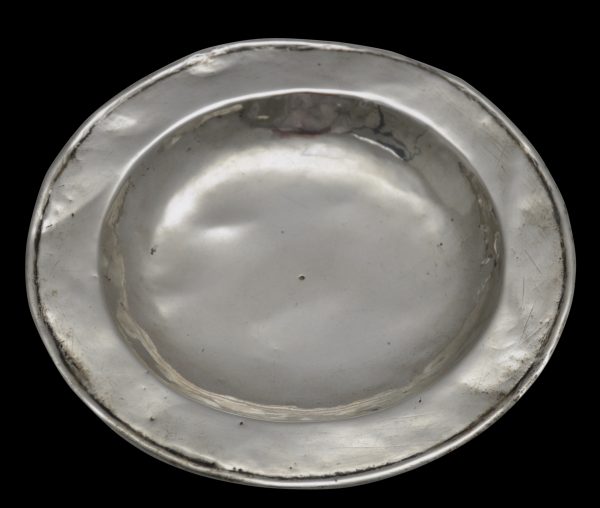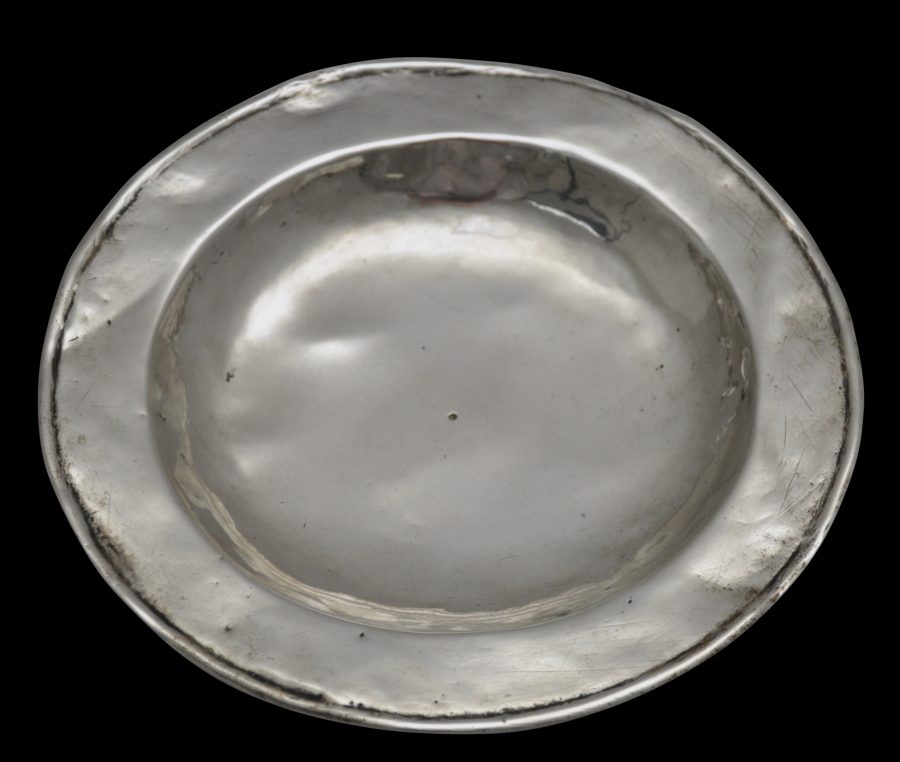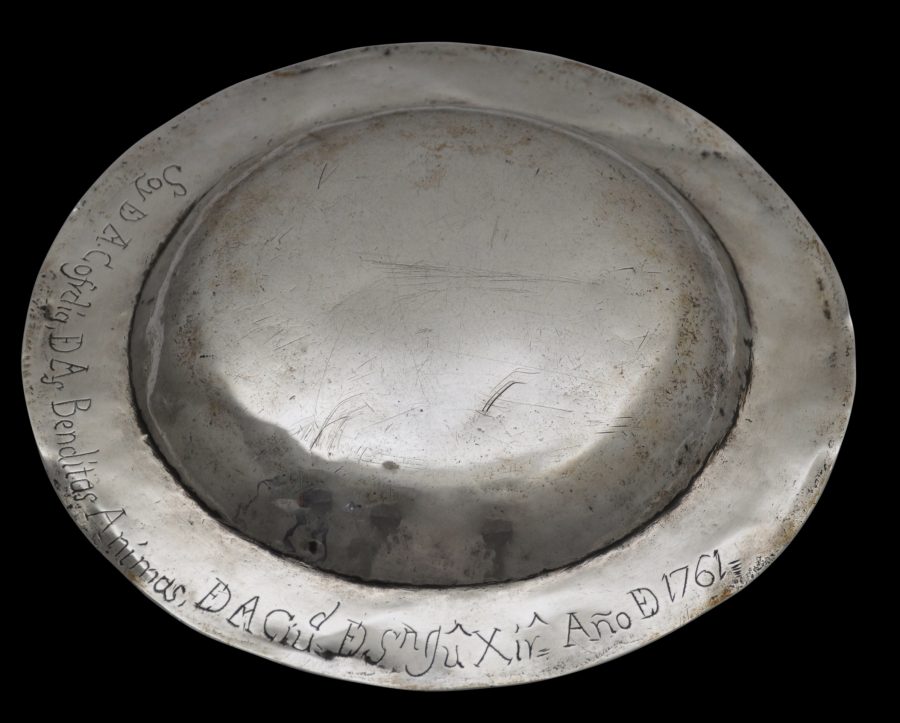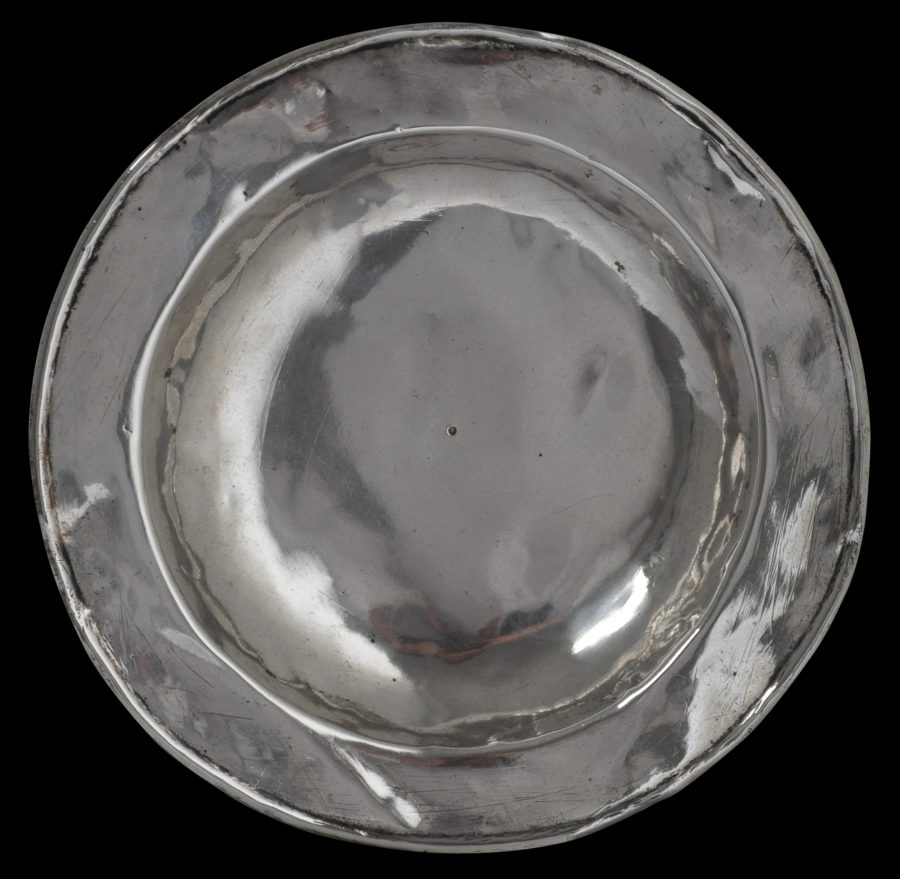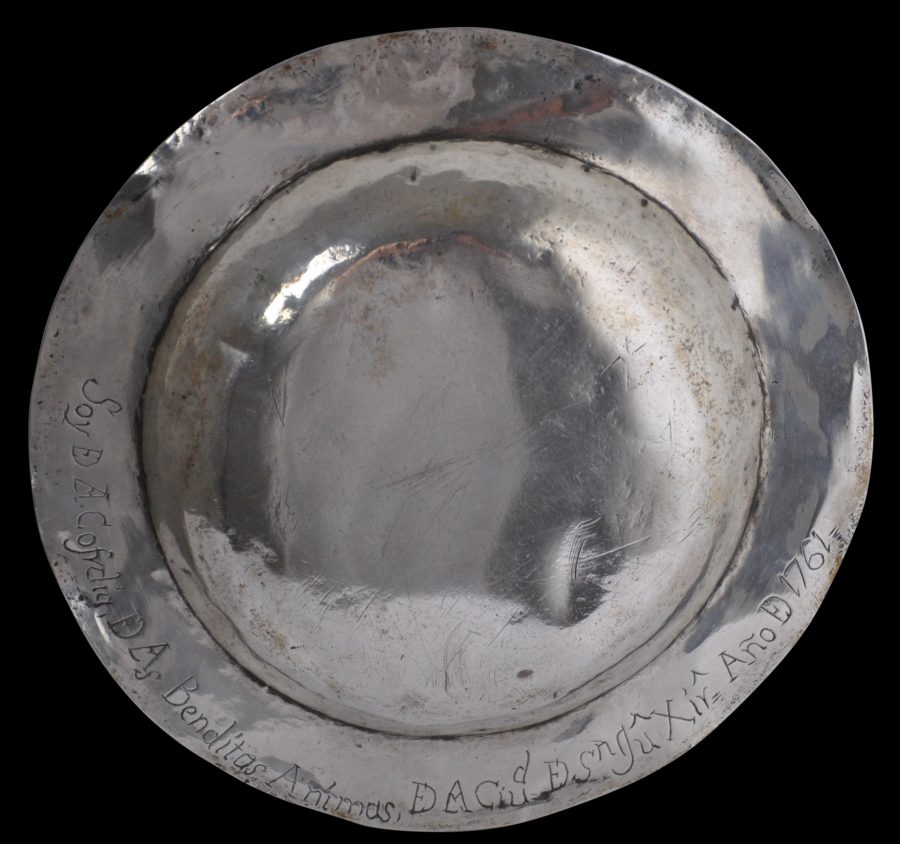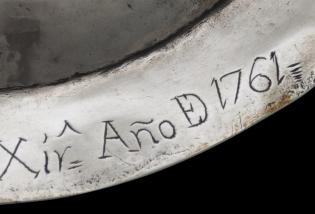This beautiful plate is made from solid silver that is almost pure, and of a grade that is probably more pure than sterling. It has a superb patina and is slightly misshapen from decades of use and handling. This wear makes the plate particularly attractive.
The other main attraction of the plate is the inscription and date engraved into the reverse which provides clues as to its use:
‘Soy ED A Cofrdia ED A s Benditas Animas ED A C iud ED S ng u Xir Ano ED 1761’ which in Spanish, with various shortenings and liturgical renderings seems to refer to the Brotherhood or Fraternity of the Blessed Angels in the year 1761.
It is likely that it was intended to be used as a paten or diskos – the small plate, usually made of silver and sometimes of gold, used to hold Eucharistic bread which is to be consecrated. It might also has served as a small collection plate, or as the plate on which a priest’s zucchetto (Spanish: solideo) or skullcap is placed when not being worn.
Traditionally, the zucchetto is worn throughout most of the Mass, but is removed at the commencement of the Preface, and replaced at the conclusion of Communion, when the Blessed Sacrament is put away. Also, it is not worn at any occasion when the Blessed Sacrament is exposed. On these occasions, during the Mass when the zucchetto needed to be removed, a priest might have been placed it on a plate such as this.
The mark in the middle of the plate is not a control, tax or assay mark but simply the mark made by the silversmith’s compass as he pressed the point into a flat, hammered sheet of silver and then swung the compass around to draw a perfect circle which would become the outline of the plate.
There are no maker’s or assay marks. This, the purity and ‘rawness’ of the silver, and the mode of construction all point to this plate as having colonial origins, most probably in South America (Latin America; Latin American) or perhaps colonial Mexico.
A similar plate now with a parish church treasury in Spain and illustrated in del Carmen Heredia Moreno et al (1992, p. 72) is attributed to 18th century Mexico.
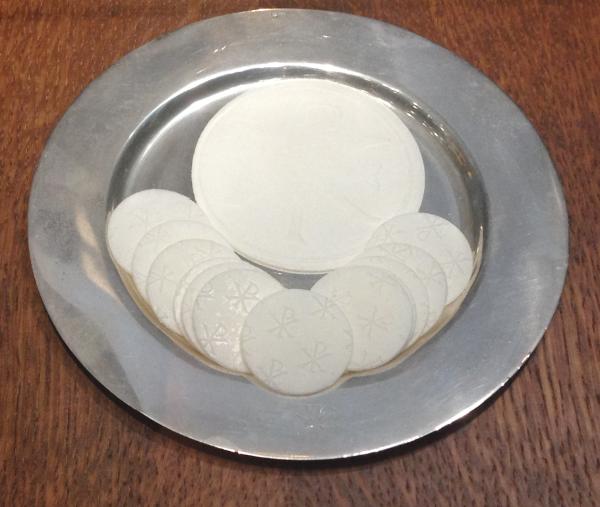
A silver paten in use – holding with the Host – in St Stephen’s Basilica, Budapest. (Photographed in July, 2017).
References
del Carmen Heredia Moreno, M., M. de Orve Sivatte, & A. de Orbe Sivatte, Arte Hispanoamericano en Navarra: Plata, Pintura y Escultura, Gobierno de Navarra, 1992.


